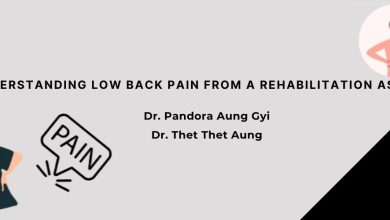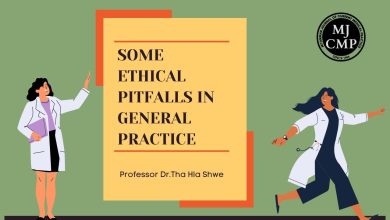Headache, pain or discomfort anywhere in the head can result from many conditions ranging from low-risk/benign to high risk/dangerous headaches although symptoms are often similar. Headaches can also be classified as “primary” or “secondary”. 4
Primary headaches are benign, recurrent headaches not caused by underlying disease or structural problems, but can cause significant daily pain and disability. The most common types of primary headaches are migraines and tension headaches. Other rare types of primary headaches are cluster headaches, trigeminal neuralgia or occipital neuralgia, hemicrania continua, primary cough headache and primary exertional headache.
Secondary headaches are caused by underlying problems such as an infection, head injury, vascular disorders, intracranial hemorrhage, or tumors and temporal arteritis and they can endanger life.
Headache is one of the most common problems encountered in ophthalmic practice. Patients often come to see the eye care practitioners as they cannot differentiate a headache from pain around the eye and headaches with asthenopic symptoms due to uncorrected refractive errors. It is mistaken that all headaches are associated with refractive errors and other ocular diseases. For these reasons, the eye care practitioners are often the first physicians to evaluate the likely causes other than eye-related headache and manage or refer to medicine or neurology for further investigations and management.
Ophthalmologists also need to be aware of some headaches that may require immediate or urgent investigation. Headache with systemic symptoms, sudden onset, new headache in older patients, abnormal neurologic examination including papilledema and change in mental status, other neurological signs and symptoms, secondary illnesses (HIV or neoplasia) demand further evaluation and appropriate investigations. 3
Eye-related Headache can be categorized in three etiologies. 3
1. Ocular headache due to uncorrected refractive errors or wrongly corrected refractive error.
The headache usually occurs during the afternoon or at the ends of the day. The constant effort exerted in order see clearly causes eye strain and finally lead to headache. The symptoms are more prominent in low grades of refractive error than in high grade errors and more prominent in astigmatism in comparison with myopia and hyperopia. Astigmatic blur may exacerbate the perception of striped patterns which are thought to be important in the visual triggers of different types of headaches. The uncorrected refractive errors are often believed to be associated with frontal and/or occipital headache. By prescribing corrected spectacles, many cases of headaches associated with refractive errors are relieved within few days. In a prospective study conducted in an ophthalmology outpatient department, analysis of the ophthalmic causes of headache and revealed that refractive errors are the most common cause.1
2. Ocular headache caused due to oculomotor anomalies
The disruption of coordination between the muscles of the two eyes, decompensated large phorias especially vertical phorias ocular muscle imbalance such as latent squint, convergence insufficiencies may cause headache due to the strain that is transferred to the head and may be the culprit.
3. Ocular headache secondary to organic eye and systemic disease
Patients with migraine, facial pain syndromes, and pain associated with cranial neuropathies, ipsilateral defect in oculo-sympathetic pathways as in Horner’s Syndrome are common encounters in ophthalmic practice. Temporal headache in an elderly person could be an emergency due to the possibility of giant cell arteritis and should alert the ophthalmic practitioner. Headache associated with papilloedema or bilateral disc swelling should exclude the intracranial pathology and elevated blood pressure.
Acute elevation in intraocular pressure like angle closure glaucoma is usually associated with pain. Any inflammatory disease like acute iritis, uveitis, orbital cellulitis and preseptal cellulitis also cause orbital pain and headache.
Among the ocular surface problems, dry eye is a common cause of headache and the medication used to treat headache may even worsen pre-existing dry eye. Computer vision syndrome is also a common encounter nowadays and is defined as eye problems caused by prolonged computer use including eye irritation; dry eyes, itchy eyes, red eyes, blurred vision and headaches.
Early diagnosis may be lifesaving in cases with secondary headache. Eye care practitioners should follow a thorough work-up of headache if a patient presents with complaints of headache in the eye outpatient department: A detailed history on headache, thorough general examination including vital signs, general appearance, scalp examination, palpitation of temporal artery and temporomandibular joint should be done.
It is advisable for those with headache to have ocular examination first, it being less invasive, less expensive and more sensitive. Complete and careful ophthalmic examination includes assessment of visual acuity, meticulous refraction, Binocular vision assessment and ocular motility- Cover test, detailed anterior segment evaluation, gonioscopy and tonometry, pupillary response, visual field assessment and detailed funduscopy. This approach will lead the successful management of cases of headaches presenting to the eye clinic. 2
Based on history and examination, and depending upon signs in suspected cause and associated symptoms, further investigations such as X ray PNS, CT or MRI, carotid flow study, lumbar puncture may be required. Prompt referral in suspected case of secondary Ophthalmologic aspects of headache to respected department or other specialists to be involved is imperative to encompass problems that range from simple and benign to complex and formidable.
References
- Inchara N, Kanthamani K, and Shiviji, AN 2023, ‘Profile of Ophthalmic Causes of Headache – A Prospective Study’, J Clin Biomed Sci; 13(4): 122-125.
- Kaiti R and Shyangbo R 2020, ‘Ocular Consultation in Headache-A Prerequisite or an Absolute Necessity? , J Ophthalmol, 5(2): 000200.
- Mollan SP, Virdee JS, Bilton EJ, Thaller M, Krishan A and Sinclair AJ.. 2021, ‘Headache for ophthalmologists: current advances in headache understanding and management’, Eye (London, England) vol. 35, 6 (2021): 1574-1586.
- Vasumathi 2018, ‘R. Approach to Headache in Ophthalmic Practice’, TNOA Journal of Ophthalmic Science and Research, 56(2):p 91-97.
Author Information
Khin Ommar Khine
M.B,B.S, M Med ScOphthal, FRCSGlasg,
Dr Med Sc Ophthalmology, Dip Med Edu







